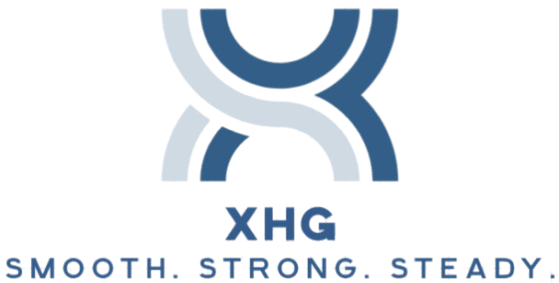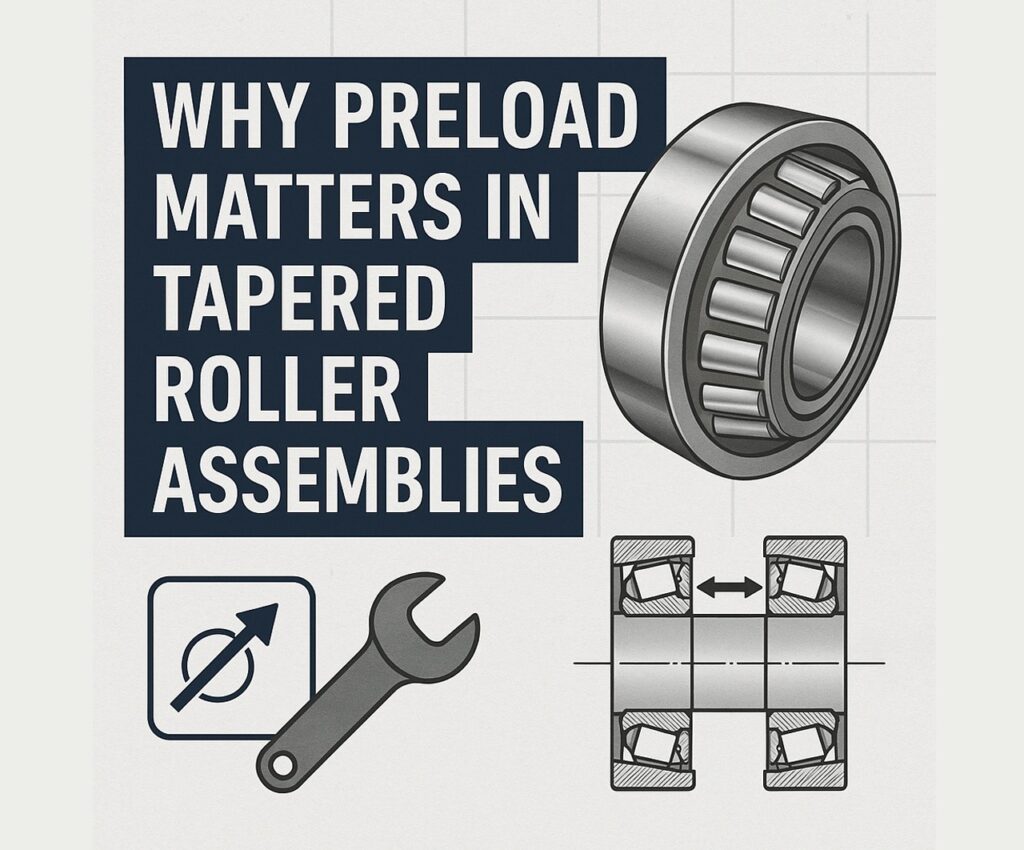When it comes to achieving peak performance and longevity in rotating machinery, preload is one of the most critical—and misunderstood—factors. Whether you’re dealing with a tapered bearing, a tapered wheel roller bearing, or a tapered needle bearing, getting the preload just right can make or break your system’s efficiency, precision, and lifespan. This article unpacks why preload matters, how it affects bearing behavior, and what engineers and technicians need to know to get it right every time. Know More
What Is Preload?
Preload refers to the axial force applied to a bearing during installation to eliminate internal clearance. In simple terms, it’s the initial “tightness” built into the system to ensure that the bearing’s rolling elements maintain constant contact with the raceways. For tapered bearing assemblies, preload is essential to prevent looseness, reduce vibration, and maintain accurate alignment under dynamic loads.
Why Tapered Bearings Require Preload
Unlike ball bearings, tapered designs rely on angled contact surfaces. This geometry enables them to support both radial and axial loads, which makes them ideal for:
- Automotive applications
- Gearboxes
- Machine tool spindles
- Axle systems
But that same geometry also means any clearance between components can lead to misalignment, noise, and early failure. That’s why tapered wheel bearing systems are typically installed with carefully calculated preload to minimize play and ensure optimal performance.
Benefits of Proper Preload
1. Eliminates Internal Clearance
By preloading a tapered bearing, internal slack is removed. This tightens up the system, ensuring more consistent motion.
2. Increases Rigidity
Machine tools and spindles demand stiffness. Proper preload enhances system rigidity, minimizing deflection under load.
3. Improves Accuracy
Precision applications require tight tolerances. A correctly preloaded tapered needle bearing maintains precise positioning, reducing backlash.
4. Reduces Vibration and Noise
Play in the system translates to chatter. Preload absorbs energy that would otherwise become noise or vibration.
5. Extends Bearing Life
When rolling elements make consistent contact with raceways, load distribution is optimized. This reduces wear and extends the service life of your tapered wheel bearing.
Risks of Incorrect Preload
Preload is a balancing act. Too little, and the bearing suffers from impact loading and instability. Too much, and you introduce excessive friction, heat, and early failure.
Under-Preload:
- Looseness and noise
- Poor load distribution
- Fatigue cracks on raceways
Over-Preload:
- Excessive torque and power consumption
- Accelerated wear on rollers and cages
- Overheating, especially at high speeds
For tapered needle bearing assemblies in particular, preload must be fine-tuned to avoid stress concentrations that could damage the slender rollers.
Methods for Setting Preload
There are two main strategies for setting preload:
1. Axial Adjustment (End Play Elimination)
This is the most common method for tapered bearing assemblies. It involves adjusting components axially until a specific torque or axial movement is achieved. It’s commonly used in:
- Automotive hubs
- Differential carriers
- Trailer axles
2. Spring Preload
Here, coil springs or wave washers apply a constant axial force. This approach is especially useful in applications where thermal expansion or vibration might otherwise alter the preload during operation.
Precision preload for a tapered wheel bearing is often achieved using:
- Torque wrenches
- Dial indicators for end play measurement
- Spacer shims
Temperature and Preload Interactions
Preload changes as a function of temperature. Metal expands when hot, which can reduce preload and introduce looseness. Conversely, in cold environments, preload may increase beyond intended limits.
For tapered needle bearing systems in engines or industrial machinery, engineers must account for thermal expansion of shafts and housings. Design compensation strategies include:
- Selecting compatible materials with similar thermal expansion rates
- Using spring-loaded mechanisms
- Applying dynamic monitoring sensors
Real-World Example: Tapered Wheel Bearing Failure
An automotive repair shop installed new tapered wheel bearing assemblies without setting preload correctly. The bearings felt fine during installation but failed within 3,000 miles. Investigation revealed:
- Excess end play during driving
- Premature fatigue of the outer race
- Increased vibration transferred to suspension
The fix? Reinstall with proper torque settings and axial adjustment—bearing life returned to expected levels.
Smart Tools for Preload Optimization
Advancements in bearing technology have introduced tools to help set preload more accurately:
- Preload gauges to measure axial displacement
- Strain gauge sensors for in-situ force monitoring
- Thermal imaging to detect friction-induced heating
- Digital torque analyzers for precision tightening
Some high-end tapered bearing manufacturers now provide preload calculators or simulation software to help engineers model dynamic behavior under various loads and temperatures.
How Preload Varies by Bearing Type
Tapered Roller Bearings
- Require high preload for rigidity in machine tools and spindles
- Often installed in pairs (face-to-face or back-to-back)
Tapered Wheel Bearings
- Need moderate preload for durability and minimal noise
- Typically used with lock nuts or axle nuts
Tapered Needle Bearings
- Require careful preload to avoid roller damage
- Often used in compact assemblies where space is tight
Each configuration has its own preload specifications, usually provided by the bearing manufacturer. Deviating from these specs shortens the life of even the best tapered needle bearing systems.
Design Best Practices
To optimize preload in your system:
- Use Matched Bearings: Mismatched tolerances between cones and cups can distort preload.
- Document Torque Settings: Always follow manufacturer guidance for each tapered wheel bearing assembly.
- Account for Lubricant Type: Oil vs. grease affects rolling resistance and initial preload.
- Include a Break-In Period: This allows the system to stabilize and “settle in” before final performance tuning.
- Monitor Performance Over Time: Use sensors or manual inspection intervals to track bearing health and preload stability.
Sustainability and Preload Efficiency
When preload is correctly set:
- Friction losses are minimized, improving energy efficiency
- Lubricant consumption decreases
- Bearings last longer, reducing replacement frequency
For manufacturers focused on sustainability, optimizing preload in every tapered bearing system can lead to measurable environmental gains.
Final Thoughts
In a world of high-speed, high-load machinery, preload is not a secondary concern—it’s a critical parameter. Whether you’re installing a tapered bearing, maintaining a tapered wheel bearing, or designing a system with a tapered needle bearing, understanding and applying the right preload strategy can significantly enhance performance, reliability, and lifespan.
It’s a balance of force, friction, and finesse—and when done right, it’s the difference between a bearing that simply spins and one that excels.

